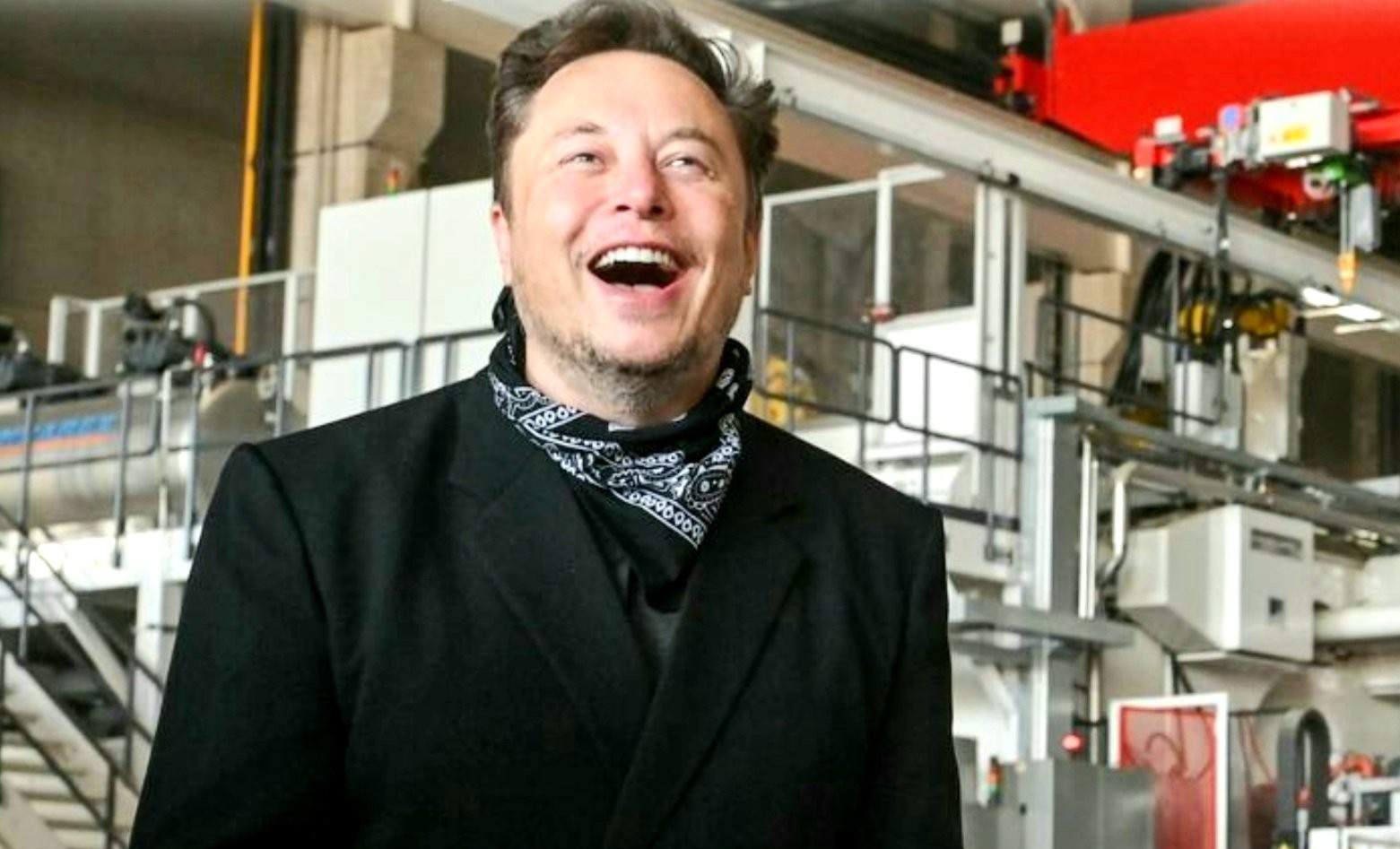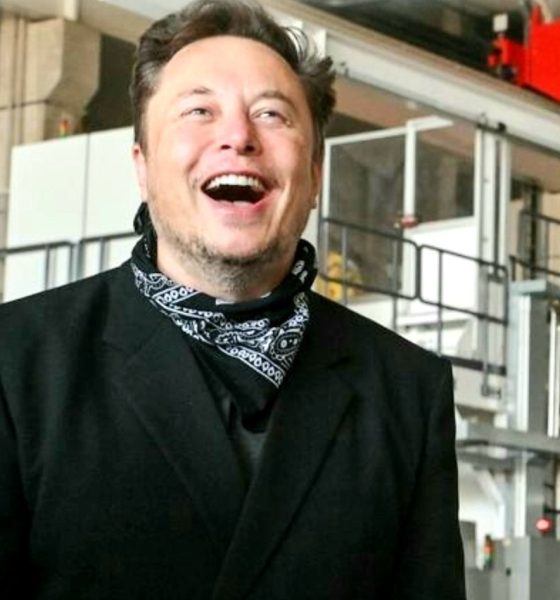

News
Elon Musk says Tesla’s valuation is high, but has a good reason for why it’s justified
If you ask anyone in the past two years who has invested money into the stock market, it is likely that the word “Tesla” will come up at one point or another. During the COVID-19 pandemic in 2020, which derailed American manufacturing, especially at automotive plants through the United States. Despite a derail in production at Tesla’s Fremont Factory in 2020, the automaker was able to stay relatively stable through a year filled with uncertainty. It ultimately led to a 700% increase in the stock price, along with an infamous Tweet sent by Tesla’s CEO on May 1st: “Tesla stock price is too high imo.”
On the day of Musk’s Tweet, Tesla shares (NASDAQ: TSLA) closed at a pre-split price of $701.30, or $140.26 on adjusted terms. Since then, Tesla stock has multiplied in value by nearly 6.5x, trading at $900.52, down nearly 27% from its 52-week high of $1,243.49, which was recorded in early November.
However, since Musk’s May 1, 2020 Tweet, a lot has changed. Tesla has two new production facilities that are nearly ready for production, it has detailed the public on a revolutionary new battery cell, and it has increased yearly production rates by expanding manufacturing footprints at its two currently-operational plants. While the stock is levels higher than what it was when Musk said the stock was too high, the CEO may have come to terms with why Tesla shares trade at extensively high prices: trust.
“I’ve tried to just tamp down expectations, saying I think the stock’s maybe too high,” Musk said in an interview with TIME, who recently named him Person of the Year for 2021. “Current valuation is pretty high,” Musk continued, “which suggests that the market has faith in future execution of the company because it’s certainly not based on historical profitability, that’s for sure.”
While Tesla is a company that has revolutionized the automotive market on a global scale, Musk has definitely come to terms with the fact that the company’s valuation is not necessarily based on presently-available information. However, innovation is something that the company has basically guaranteed through its products. If not for Tesla, it is likely that the companies like Ford, GM, and Volkswagen would probably not have such a tremendous focus on EVs currently. In fact, many of these automakers would probably be pumping out more ICE vehicles than ever. But Tesla’s market influence through flashy, fast, and futuristic electric cars has forced the long-standing dominators of the global car market to reconsider their strategies.
Tesla’s current valuation is no longer $1 trillion. It currently sits at just over $905 billion, according to CompaniesMarketCap.com, which tracks the valuations of companies in various sectors. However, Tesla is well over three times as valuable as second-place Toyota, which delivered 9,528,438 vehicles last year. Tesla delivered 499,550. Tesla also has an energy business, which oftentimes goes unnoticed and unaccounted for by analysts. Even still, is this enough to justify the company’s astronomical stock price?
Tesla stock price is too high imo
— Elon Musk (@elonmusk) May 1, 2020
Musk believes the faith from investors must be the reason, and who can blame them. Tesla has not been on time to some of its deadlines, but in a world of uncertainty, many companies have not performed well since the pandemic began. Take previously mentioned Toyota, for example. Despite selling over 9.5 million cars last year, it was an over 11% decrease from 2019. Tesla is continuing to build upon an already solid foundation for its cars and its company, and investor faith, which is evident if you know any Tesla stockholder, is at an all-time high.
Disclosure: Joey Klender is a TSLA Shareholder.
I’d love to hear from you! If you have any comments, concerns, or questions, please email me at joey@teslarati.com. You can also reach me on Twitter @KlenderJoey, or if you have news tips, you can email us at tips@teslarati.com.

News
Tesla China quietly posts Robotaxi-related job listing
Tesla China is currently seeking a Low Voltage Electrical Engineer to work on circuit board design for the company’s autonomous vehicles.

Tesla has posted a new job listing in Shanghai explicitly tied to its Robotaxi program, fueling speculation that the company is preparing to launch its dedicated autonomous ride-hailing service in China.
As noted in the listing, Tesla China is currently seeking a Low Voltage Electrical Engineer to work on circuit board design for the company’s autonomous vehicles.
Robotaxi-specific role
The listing, which was shared on social media platform X by industry watcher @tslaming, suggested that Tesla China is looking to fill the role urgently. The job listing itself specifically mentions that the person hired for the role will be working on the Low Voltage Hardware team, which would design the circuit boards that would serve as the nervous system of the Robotaxi.
Key tasks for the role, as indicated in the job listing, include collaboration with PCB layout, firmware, mechanical, program management, and validation teams, among other responsibilities. The role is based in Shanghai.
China Robotaxi launch
China represents a massive potential market for robotaxis, with its dense urban centers and supportive policies in select cities. Tesla has limited permission to roll out FSD in the country, though despite this, its vehicles have been hailed as among the best in the market when it comes to autonomous features. So far, at least, it appears that China supports Tesla’s FSD and Robotaxi rollout.
This was hinted at in November, when Tesla brought the Cybercab to the 8th China International Import Expo (CIIE) in Shanghai, marking the first time that the autonomous two-seater was brought to the Asia-Pacific region. The vehicle, despite not having a release date in China, received a significant amount of interest among the event’s attendees.
Elon Musk
Elon Musk and Tesla AI Director share insights after empty driver seat Robotaxi rides
The executives’ unoccupied tests hint at the rapid progress of Tesla’s unsupervised Robotaxi efforts.

Tesla CEO Elon Musk and AI Director Ashok Elluswamy celebrated Christmas Eve by sharing personal experiences with Robotaxi vehicles that had no safety monitor or occupant in the driver’s seat. Musk described the system’s “perfect driving” around Austin, while Elluswamy posted video from the back seat, calling it “an amazing experience.”
The executives’ unoccupied tests hint at the rapid progress of Tesla’s unsupervised Robotaxi efforts.
Elon and Ashok’s firsthand Robotaxi insights
Prior to Musk and the Tesla AI Director’s posts, sightings of unmanned Teslas navigating public roads were widely shared on social media. One such vehicle was spotted in Austin, Texas, which Elon Musk acknowleged by stating that “Testing is underway with no occupants in the car.”
Based on his Christmas Eve post, Musk seemed to have tested an unmanned Tesla himself. “A Tesla with no safety monitor in the car and me sitting in the passenger seat took me all around Austin on Sunday with perfect driving,” Musk wrote in his post.
Elluswamy responded with a 2-minute video showing himself in the rear of an unmanned Tesla. The video featured the vehicle’s empty front seats, as well as its smooth handling through real-world traffic. He captioned his video with the words, “It’s an amazing experience!”
Towards Unsupervised operations
During an xAI Hackathon earlier this month, Elon Musk mentioned that Tesla owed be removing Safety Monitors from its Robotaxis in Austin in just three weeks. “Unsupervised is pretty much solved at this point. So there will be Tesla Robotaxis operating in Austin with no one in them. Not even anyone in the passenger seat in about three weeks,” he said. Musk echoed similar estimates at the 2025 Annual Shareholder Meeting and the Q3 2025 earnings call.
Considering the insights that were posted Musk and Elluswamy, it does appear that Tesla is working hard towards operating its Robotaxis with no safety monitors. This is quite impressive considering that the service was launched just earlier this year.
Elon Musk
Starlink passes 9 million active customers just weeks after hitting 8 million
The milestone highlights the accelerating growth of Starlink, which has now been adding over 20,000 new users per day.

SpaceX’s Starlink satellite internet service has continued its rapid global expansion, surpassing 9 million active customers just weeks after crossing the 8 million mark.
The milestone highlights the accelerating growth of Starlink, which has now been adding over 20,000 new users per day.
9 million customers
In a post on X, SpaceX stated that Starlink now serves over 9 million active users across 155 countries, territories, and markets. The company reached 8 million customers in early November, meaning it added roughly 1 million subscribers in under seven weeks, or about 21,275 new users on average per day.
“Starlink is connecting more than 9M active customers with high-speed internet across 155 countries, territories, and many other markets,” Starlink wrote in a post on its official X account. SpaceX President Gwynne Shotwell also celebrated the milestone on X. “A huge thank you to all of our customers and congrats to the Starlink team for such an incredible product,” she wrote.
That growth rate reflects both rising demand for broadband in underserved regions and Starlink’s expanding satellite constellation, which now includes more than 9,000 low-Earth-orbit satellites designed to deliver high-speed, low-latency internet worldwide.
Starlink’s momentum
Starlink’s momentum has been building up. SpaceX reported 4.6 million Starlink customers in December 2024, followed by 7 million by August 2025, and 8 million customers in November. Independent data also suggests Starlink usage is rising sharply, with Cloudflare reporting that global web traffic from Starlink users more than doubled in 2025, as noted in an Insider report.
Starlink’s momentum is increasingly tied to SpaceX’s broader financial outlook. Elon Musk has said the satellite network is “by far” the company’s largest revenue driver, and reports suggest SpaceX may be positioning itself for an initial public offering as soon as next year, with valuations estimated as high as $1.5 trillion. Musk has also suggested in the past that Starlink could have its own IPO in the future.








